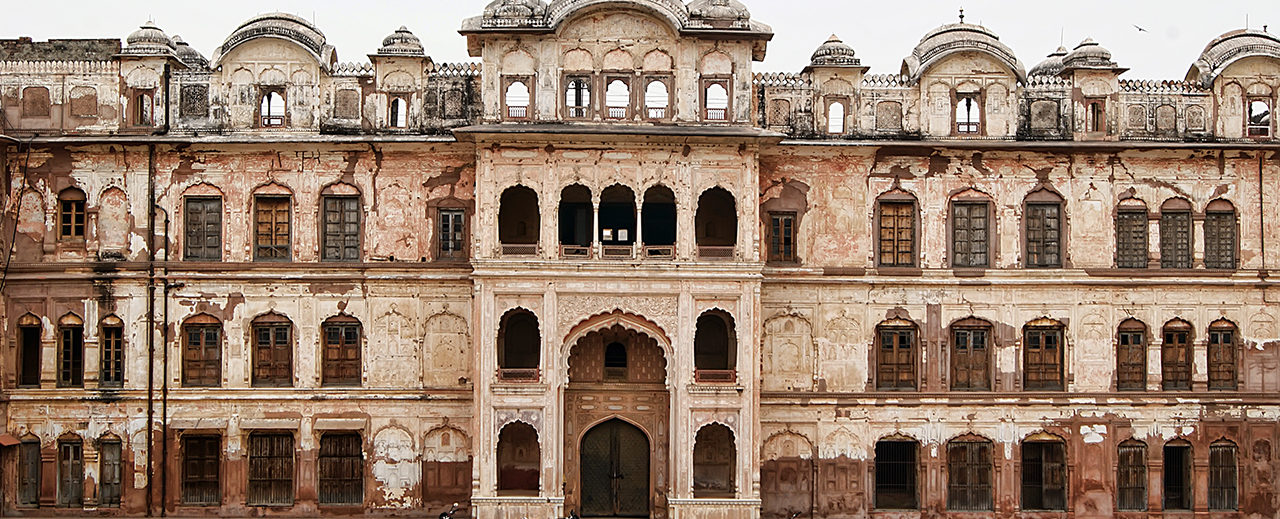
Qila Mubarak, Patiala, Punjab Project

Qila Mubarak is an outstanding and exemplary architectural delight located in Patiala. This monument is a hallmark of Sikh Palace architecture. The sprawling Qila Mubarak complex is spread on a 10-acre land in the heart of Patiala. The complex comprises the main palace building known as Qila Androon, the guesthouse called Ran Bass as well as a Darbar Hall.
Outside the main fort area, you can find a Shiva temple, Darshani Gate and a bazaar bordering the streets that run alongside the Qila. The bazaar shops here sell ornate jewellery items, vibrant ‘Parandis’, ‘jootis’, striking hand-woven fabrics and several other beautiful local items. Qila Mubarak was the primary residence for Patiala aristocrats till Old Moti Bagh Palace was created as the new royal residence.
In the year 1763, Baba Ala Singh started groundwork for Patiala Fort, which is now known as Qila Mubarak. The current city of Patiala is developed around Qila Mubarak. In the year 1761, the third Battle of Panipat reached an end. The Marathas were defeated by Afghans whose rule prevailed through the entire region of Punjab. During this time, Patiala’s rulers started acquiring the pennants of royalty. Ala Singh was bestowed with banner and firm by Ahmad Shah Abdali. Ala Singh was also bestowed with the title of Maharaja of Patiala. After his demise Ala Singh’s grandson Amar Singh became the new king and was bestowed with Raja-I-Raajan title. He also was granted the permission for striking coins.
The entrance to the fort complex of Qila Mubarak is through a magnificent gate. Qila Mubarak’s architectural style is a lethal blend of late Rajasthani and Mughal architectures. This fort complex comprises 10 courtyards spread across the north-south axis. Each of these courtyards is distinct in its character, appeal and style. Some courtyards are quite broad while others are small. Some of these courtyards are merely a slit the building’s fabric. The Androon is an isolated interconnected structure. However, it is described as a series of imposing palaces. Each courtyard is enveloped by a cluster of set of rooms. Each has a unique name- Qila Mubarak, Topkhana, Prison, Treasury and Sheesh Mahal.
Ten of these rooms are elaborately embellished with gilt and mirror or painted beautifully with frescoes. In a small portion inside the complex, one can find a tiny British edifice decorated with Gothic arches, fireplaces designed of marble and in-built restrooms atop the Mughal Rajasthani roof. Burj Baba Ala Singh still has a fire ablaze since the reign of Baba Ala Singh. Alongside, there is also a flame he brought from Jwalaji. During the Heritage Festival, it is stunningly decorated every year.